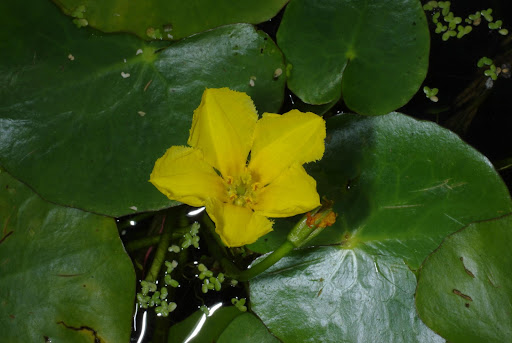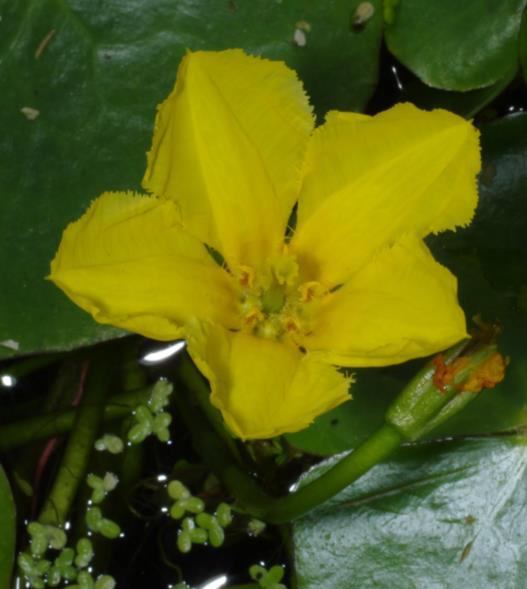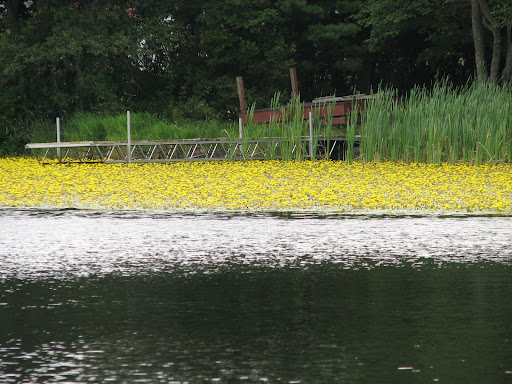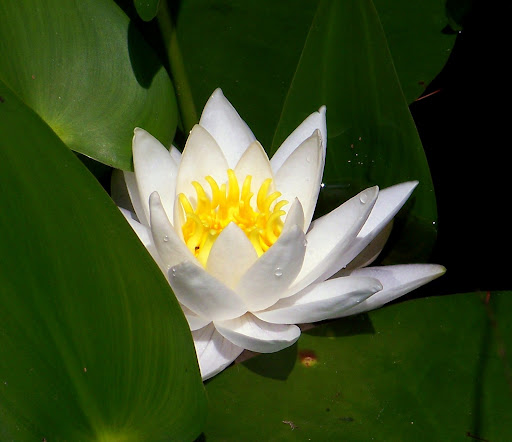Yellow Floating Heart is a bottom-rooted, floating-leaved aquatic plant. Its leaves are round, heart or kidney-shaped, 3–15 cm in diameter, and have somewhat wavy edges that are often tinged purple-brown beneath. It has several flowers which bloom on individual stalks from a common point on the stem. Its flowers are yellow, 3–4 cm in diameter, star-shaped with five fringed petals, and bloom from June to August. Long, creeping stems typically bear several erect leaf-bearing stems which are 2–3 mm thick.
Slow-moving waters of ponds, lakes, rivers, streams, and wetlands. Yellow Floating Heart can be found anywhere from water’s edge to a depth of 4 m. This plant can form dense mats of floating vegetation that excludes native species, and can also create stagnant areas which result in a lower level of oxygen, thereby negatively affecting the habitat of native fish. As a result, the quality of native freshwater habitat suffers, and even recreational activities (like swimming and canoeing) can become difficult or impossible.
First marketed as an ornamental plant in 1891 in the United States, Yellow Floating Heart subsequently spread as a horticultural species and is still commonly used in some regions. This plant was only recently introduced to Nova Scotia, where it was first reported as having escaped from a water garden at Little Albro Lake (Halifax County) in 2006.

Floating Heart (Nymphoides cordata), Yellow Pond Lily (Nuphar variegata), and Fragrant Water Lily (Nymphaea odorata) are all attractive native aquatic plants.
Aquatic plant, five fringed petals.




This species, which reproduces abundantly by seed and through its root system, may also spread over considerable distances via broken root and stem fragments. Even moving just a small piece of a Yellow Floating Heart stem can be enough to spread this invasive species to a new water body or river system.
Promote the use of native ornamental aquatic plants. Always clean your recreational gear properly after visiting a waterway. If you spot these invasive species, report the location to iNaturalist or directly to the NSISC.
Join our mailing list.